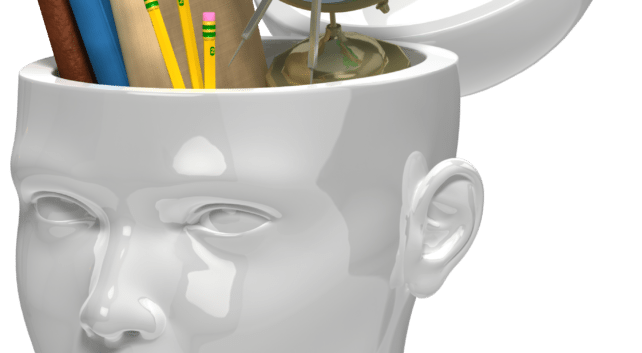- sales
- Blog post
Throw them in the deep end
Imagine for a moment that your company has decided to pursue a new market for your products — let’s say nuclear engineering.
Your salespeople don’t know a neutrino from a Torino. So you ask them to put their heads together to answer questions like these:
1. A neutrino is:
A. An electrically neutral subatomic particle.
B. The fundamental building block of a neutron.
C. A method for neutralizing gamma radiation.
D. A midsize sedan manufactured by Ford Motor Company in the 1960s and 1970s.
Next, you give them a role-playing assignment, in which they’re asked to explain to nuclear engineers why they should buy your products.
That’s all pretty pointless, right? Reps are going to flunk the quiz and come up empty in the role play. All you’ve done is make them feel stupid.
Actually, those are two examples of what learning professionals call “productive failure.” And research shows that such failures are a powerful learning tool.
In one experiment, for example, math students were divided into two groups. One group learned math the old-fashioned way, with lectures by an instructor, practice exercises in class and homework.
The other group — the productive failure group — was given tough problems to solve, with no guidance. And just to be sure these students would fail, the problems were written in an intentionally confusing style.
The productive failure group lived up to its name. The students failed over and over. When they did, instructors told them to keep trying.
And then, in a final session, the instructors explained how to solve the problems.
So how did they do?
In a follow-up test, the productive-failure group scored 10% higher than the students who received the traditional instruction. On especially tough problems — those that were confusing or poorly worded — they outperformed traditional learners by 23%. And when both groups were tested on entirely new content, half of the productive-failure group passed, versus less than a quarter of the traditional learners.
Why did students who failed to get the right answers learn more?
Because struggle seems to prime the brain to absorb new information. As the students used different unsuccessful strategies to come up with the solutions, their minds were engaging with the material on a deeper level. So when the right answer was provided, everything clicked into place. They not only learned the right answer; they learned why the answer was right.
Productive failure also seems to help us remember what we’ve learned. When we have to struggle to acquire knowledge, the brain seems to prioritize that knowledge. “This must be important,” it thinks, “because I worked so hard to learn it.”
So, for example, when you later tell reps that a neutrino is an electrically neutral subatomic particle, they’re more likely to remember it. The brain encodes this information as being important, and therefore worth hanging onto.
But will sales reps resent you for making them feel stupid? Maybe. So you need to explain why you’re doing it. Help them understand that the stupider they feel, the smarter they’re getting.
So let’s see if productive failure has worked in this blog post. Which of the following describes a neutrino? (No looking back at the right answer.)
A. An electrically neutral subatomic particle.
B. The fundamental building block of a neutron.
C. A method for neutralizing gamma radiation.
D. A midsize sedan manufactured by Ford Motor Company in the 1960s and 1970s.
How did you do?
Source: Kapur, M. (2010). Productive failure in mathematical problem solving. Instructional Science, 38(6), 523-550.

Get a demo of all our training features
Connect with an expert for a one-on-one demonstration of how BTS Total Access can help develop your team.



